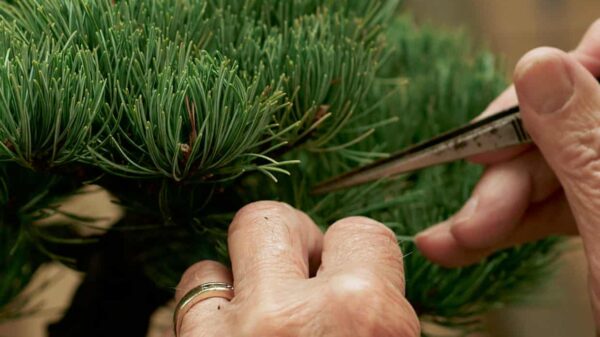URGENT UPDATE: Researchers have discovered what is believed to be the world’s largest spider web, housing an astonishing 110,000 spiders, in a cave located on the Albanian-Greek border. This groundbreaking find highlights an unprecedented coexistence of two spider species within a massive web that stretches over 1,140 square feet.
The remarkable discovery was made in the Sulfur Cave, a dark, sulfur-rich environment that extends into Albania from Greece. Evolutionary biologist Lena Grinsted from the University of Portsmouth expressed her excitement, stating, “Group living is really rare in spiders,” emphasizing the significance of this phenomenon.
The study, published in the journal Subterranean Biology, showcases the peaceful cohabitation of approximately 69,000 Tegenaria domestica (common house spiders) and 42,000 Prinerigone vagans. This behavior, never before observed, has baffled scientists, as larger spiders typically prey on smaller ones.
Dr. Grinsted noted, “So often if you have spiders in close vicinity, they will fight and end up eating each other.” The unexpected harmony within this spider community is thought to be influenced by the abundant food supply provided by an estimated 2.4 million midge flies that inhabit the cave.
Researchers are eager to explore how these two species manage to coexist in a permanently dark zone about 164 feet from the cave entrance. The darkness may impair their vision, allowing them to thrive without aggression. Dr. Grinsted suggested that the larger spiders may have adapted to rely on vibratory cues from the flies landing on their webs, rather than attacking.
The giant web was first observed in 2021 by Czech speleologists led by Marek Audy. A year later, the research team expanded to include scientists from various universities, culminating in the recent publication of their findings. Audy described the web as “dense; it’s more like a blanket,” highlighting the unique living conditions that enable these spiders to thrive in an otherwise predator-scarce environment.
This discovery does not only shed light on the peculiar lifestyle of these spiders but also raises intriguing questions about their evolutionary adaptations. Biologist Dr. Blerina Vrenozi of the University of Tirana noted that the DNA of these cave-dwelling spiders differs from their outdoor counterparts, suggesting a unique evolutionary path.
Experts in the field, including Dr. Sara Goodacre from the University of Nottingham, emphasize the importance of this research. She stated, “Natural selection will favor the ‘best’ strategies,” hinting at the broader implications for our understanding of evolutionary biology.
As the scientific community continues to study this extraordinary arachnid colony, there are also practical implications regarding conservation. Audy revealed that Albania has already raised questions regarding the territoriality of these newly famous spiders, confirming that the web resides on the Greek side of the border.
The ongoing research into this remarkable spider colony is set to reveal more about the dynamics of coexistence and the evolutionary strategies that allow such an unusual community to flourish. As the story develops, it captures the fascination of scientists and nature enthusiasts alike, prompting discussions about the mysteries of the natural world.
This discovery not only challenges our understanding of spider behavior but also emphasizes the importance of protecting unique ecosystems like the Sulfur Cave. The implications of this study could pave the way for future research that explores the intricate relationships between species in extreme environments, making it a tale worth sharing and following closely.







































































